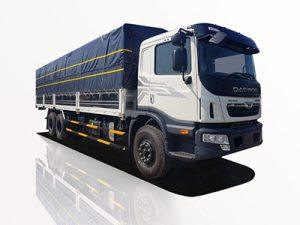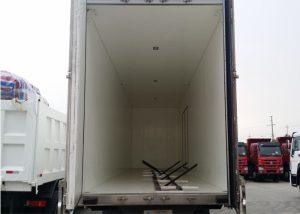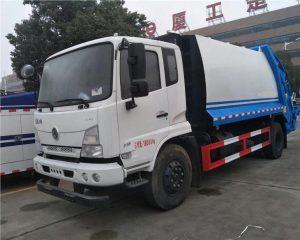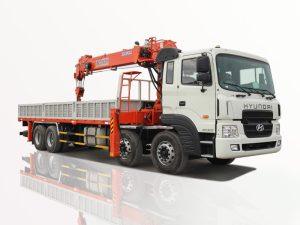Monday to Saturday - 8:00 -17:30
Understanding Oil Tanker Trucks: An Ultimate Guide
Oil tanker trucks play a critical role in the transportation and delivery of petroleum products. These specialized vehicles are designed to carry large quantities of oil, gasoline, diesel, and other liquid fuels efficiently and safely. This article provides an in-depth look at oil tanker trucks, encompassing their design, functionality, safety protocols, regulations, maintenance, and more, aimed at both industry professionals and consumers alike.
Table of Contents
- What Are Oil Tanker Trucks?
- Types of Oil Tanker Trucks
- Key Components of Oil Tanker Trucks
- Safety Protocols in Oil Transportation
- Regulations and Standards
- Maintenance Tips for Oil Tanker Trucks
- Common Issues and Solutions
- Trends in Oil Tanker Technology
- Frequently Asked Questions
What Are Oil Tanker Trucks?
Oil tanker trucks are large vehicles specifically designed to transport various types of liquid fuel, primarily crude oil, gasoline, diesel, and other petroleum products. These trucks are equipped with specialized tanks that facilitate safe and efficient transporting. They are essential in the supply chain, moving products from refineries to distribution centers and fueling stations.
Characteristics of Oil Tanker Trucks
- Capacity: Oil tanker trucks can hold anywhere from 1,000 to over 10,000 gallons of liquid.
- Design: They are designed to minimize sloshing, reduce weight, and ensure durability under harsh conditions.
- Materials: Most tanks are constructed from steel or aluminum alloys to withstand high pressure and corrosion.
Types of Oil Tanker Trucks
There are several types of oil tanker trucks categorized primarily by their use and design. Understanding these varieties helps in selecting the right truck for specific needs.
1. Bulk Oil Tankers
Bulk oil tankers are designed to carry large volumes of liquid fuel. They often feature multiple compartments for transporting different products simultaneously.
2. Vacuum Tankers
Vacuum tankers utilize a vacuum system to help remove liquids, making them suitable for transporting oils and other viscous substances.
3. Tank Trailers
Tank trailers are towed by a truck and offer flexibility in transporting liquid products over long distances. They can be single or multi-compartmented.
4. Specialty Tankers
These trucks are customized to carry specific petroleum products, such as liquefied natural gas (LNG) or asphalt, and often include additional safety features.
Key Components of Oil Tanker Trucks
Understanding the essential components of oil tanker trucks is vital for safe operation and maintenance. Here are some of the key parts:
1. Tank
The tank is the main component where the oil is stored. Tanks are insulated and sometimes equipped with heating systems to prevent the liquid from solidifying.
2. Pump System
A pump is crucial for loading and unloading the petroleum products efficiently. Different pumps, such as centrifugal or positive displacement pumps, may be used based on the product’s viscosity.
3. Metering System
A metering system ensures the accurate measurement of the liquids transported, providing accountability and helping avoid discrepancies in fuel transfers.
4. Valves
Valves control the flow of oil, helping to manage the loading and unloading processes and ensuring that leaks are minimized.
5. Safety Equipment
Safety features such as pressure relief valves, grounding systems, and emergency shut-off systems are essential to manage potential emergencies.
Safety Protocols in Oil Transportation
Safety is paramount when dealing with oil tanker trucks. Adhering to robust safety protocols minimizes risks associated with spills, leaks, and accidents.
1. Training and Certification
Drivers must undergo comprehensive training programs to operate oil tanker trucks safely. Certification from recognized organizations establishes a baseline of knowledge.
2. Pre-Trip Inspections
Conducting thorough pre-trip inspections of the tank, hoses, and safety equipment is essential to ensure that everything is in good working order before departures.
3. Load Securement
Ensuring that the cargo is secure helps prevent spills. Use of baffles inside the tank can reduce movement of liquid, aiding in stability during transit.
Regulations and Standards
Various regulations govern the operation of oil tanker trucks to ensure public safety and environmental protection.
1. Environmental Regulations
Agencies like the Environmental Protection Agency (EPA) set regulations that oil companies must follow to minimize environmental impact during transportation.
2. Department of Transportation (DOT) Regulations
The DOT outlines specific regulations related to transporting hazardous materials, including driver qualifications and vehicle specifications.
3. State Regulations
State-specific regulations may add additional layers of requirements, such as local permit requirements and road restrictions.
Maintenance Tips for Oil Tanker Trucks
Regular maintenance of oil tanker trucks is crucial for ensuring safety and extended service life. Here are some effective maintenance tips:
1. Schedule Regular Inspections
Have a routine inspection schedule for checking critical components such as tanks, pumps, and safety equipment.
2. Monitor Fluid Levels
Regularly check and maintain fluid levels, including fuel, oil, and coolant, to ensure optimal performance of the truck.
3. Address Repairs Promptly
Repair any identified issues immediately to mitigate further damage and ensure compliance with safety regulations.
4. Clean the Tank
Keep the tanks clean to avoid contamination of the transported products. Thorough cleaning should be part of the maintenance routine.
Common Issues and Solutions
Like any specialized vehicle, oil tanker trucks can experience specific issues. Here are some common problems along with potential solutions:
1. Leakage
Solution: Regularly inspect hoses and seals for wear and tear. Replace any damaged parts immediately.
2. Pump Malfunctions
Solution: Ensure routine maintenance on pump systems and monitor performance closely to catch issues early.
3. Tire Issues
Solution: Check tire pressure regularly and inspect for flat spots or wear, especially given the weight of the loaded truck.
4. Corrosion
Solution: Regularly treat the tank and its components with anti-corrosive agents to prolong their lifespan.
Trends in Oil Tanker Technology
The oil transportation industry is continuously evolving, and various technological advancements shape the future of oil tanker trucks.
1. Automation
New technology is integrating automation into tanker operations, helping to improve efficiency and reduce human error.
2. Advanced Safety Features
Modern oil tankers are increasingly equipped with state-of-the-art safety systems including collision avoidance technology and real-time monitoring systems.
3. Eco-Friendly Designs
Many companies are exploring eco-friendly designs and fuel alternatives to reduce the carbon footprint associated with oil transportation.
4. Telematics
Telematics systems offer fleet managers real-time data regarding vehicle performance, fuel efficiency, and driver behavior, enhancing overall operations.
Frequently Asked Questions
1. What is the average capacity of an oil tanker truck?
The average oil tanker truck can hold between 5,000 to 9,000 gallons of liquid fuel, depending on the design and purpose.
2. How often should oil tanker trucks undergo maintenance?
Routine maintenance should be performed at least every 6 months, with pre-trip inspections conducted before each journey.
3. Are there special licensing requirements for driving an oil tanker truck?
Yes, drivers must obtain a Commercial Driver’s License (CDL) with a Hazardous Materials (Hazmat) endorsement to transport oil legally.
4. What should I do in case of a spill?
In case of a spill, follow the emergency response plan, notify authorities immediately, and use spill containment kits to manage the situation swiftly.
5. How can technology improve the safety of oil tanker trucks?
Technology such as real-time monitoring systems and advanced safety features can significantly enhance the safety of oil tanker operations by providing data and alerts to prevent accidents.
6. What measures are taken to prevent corrosion in oil tanks?
Regular cleaning, routine inspections, and the use of anti-corrosive agents help prevent corrosion in oil tanks, extending their lifespan and functionality.









